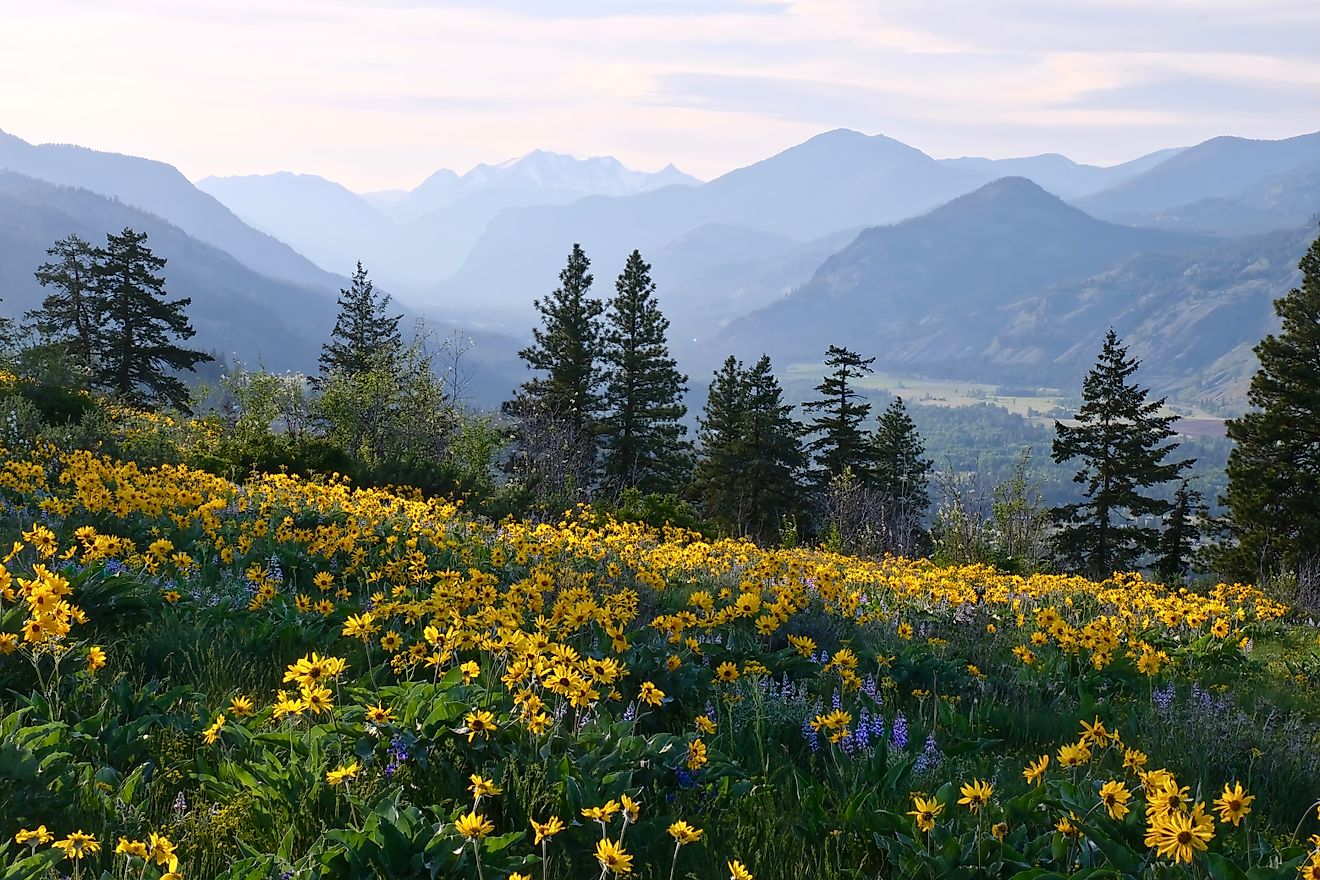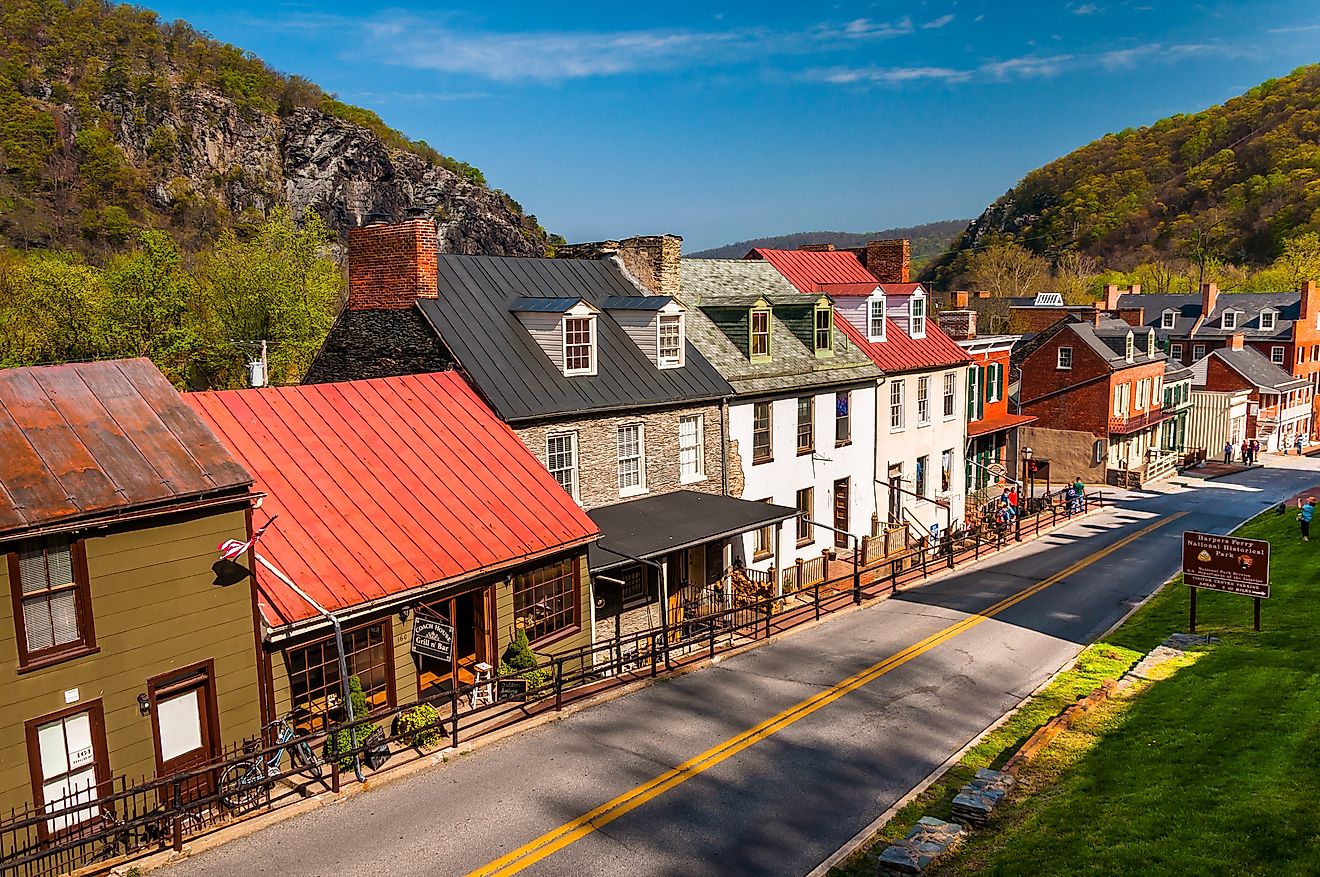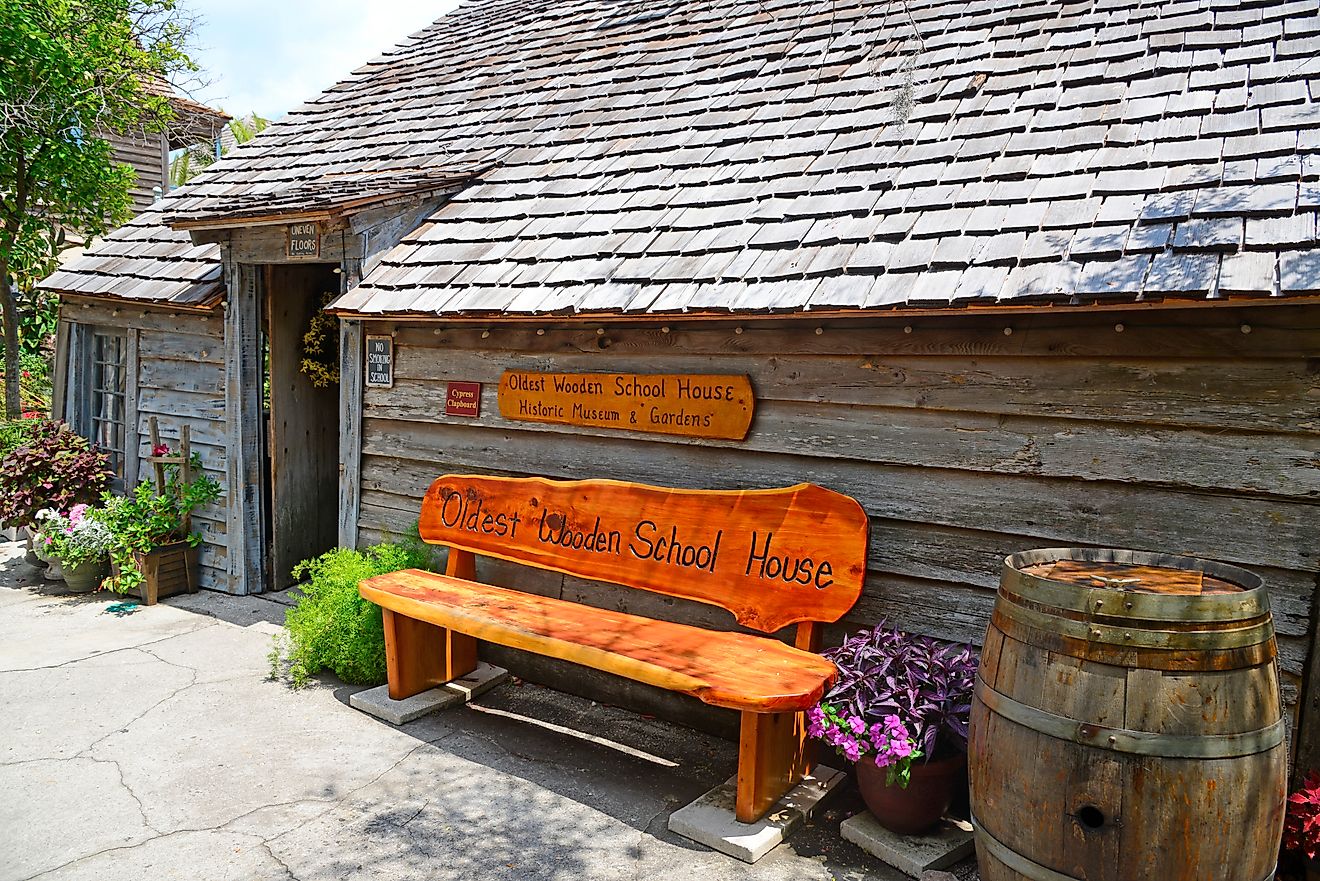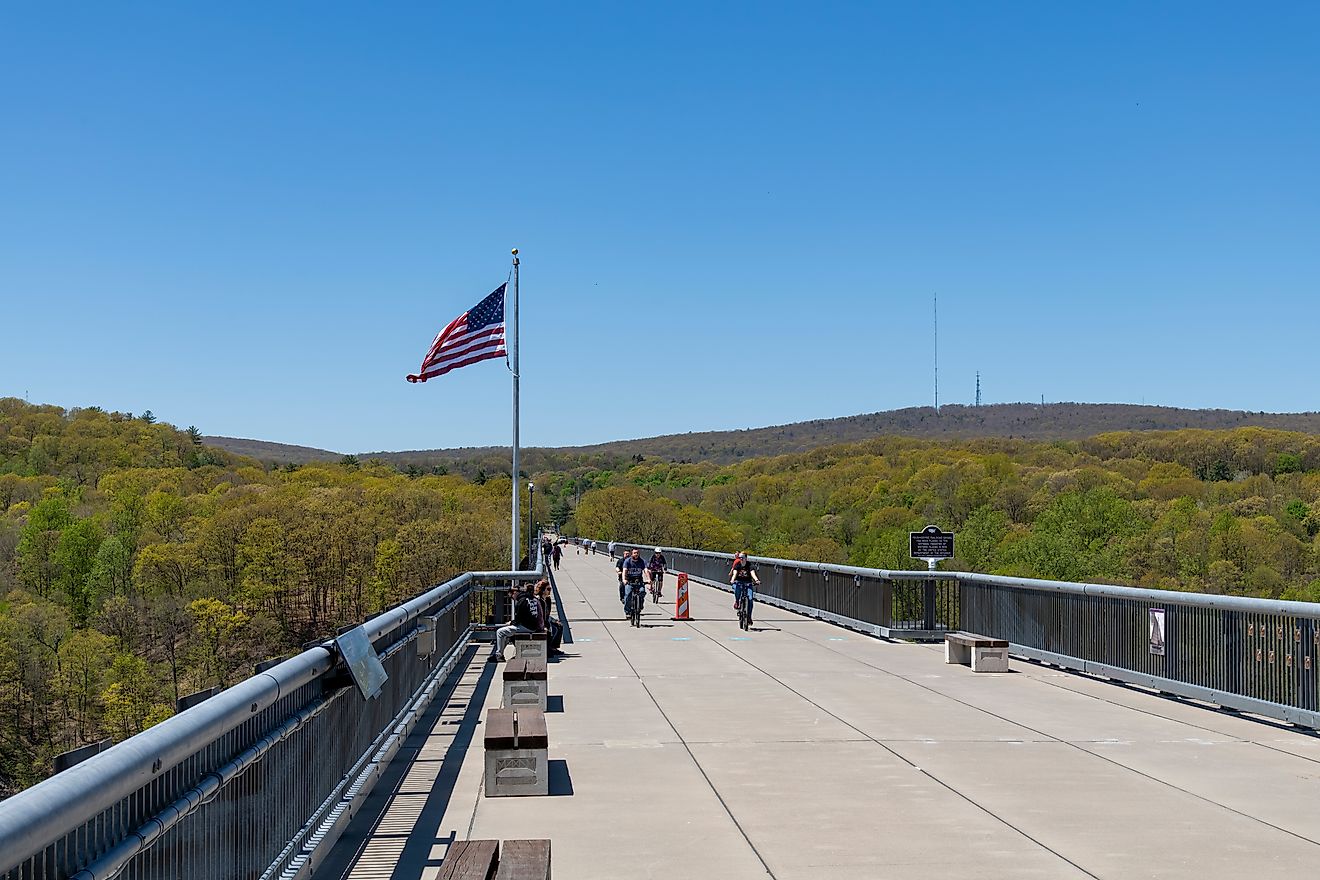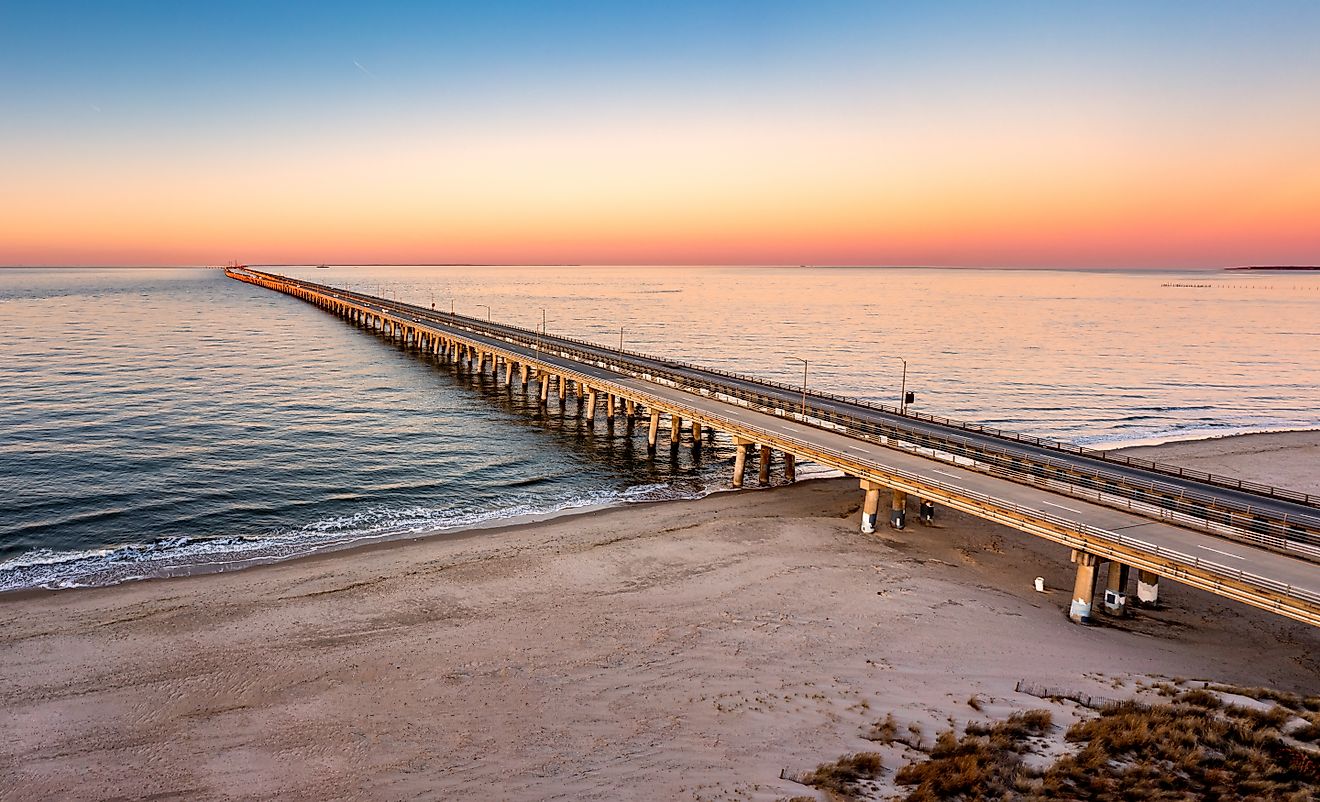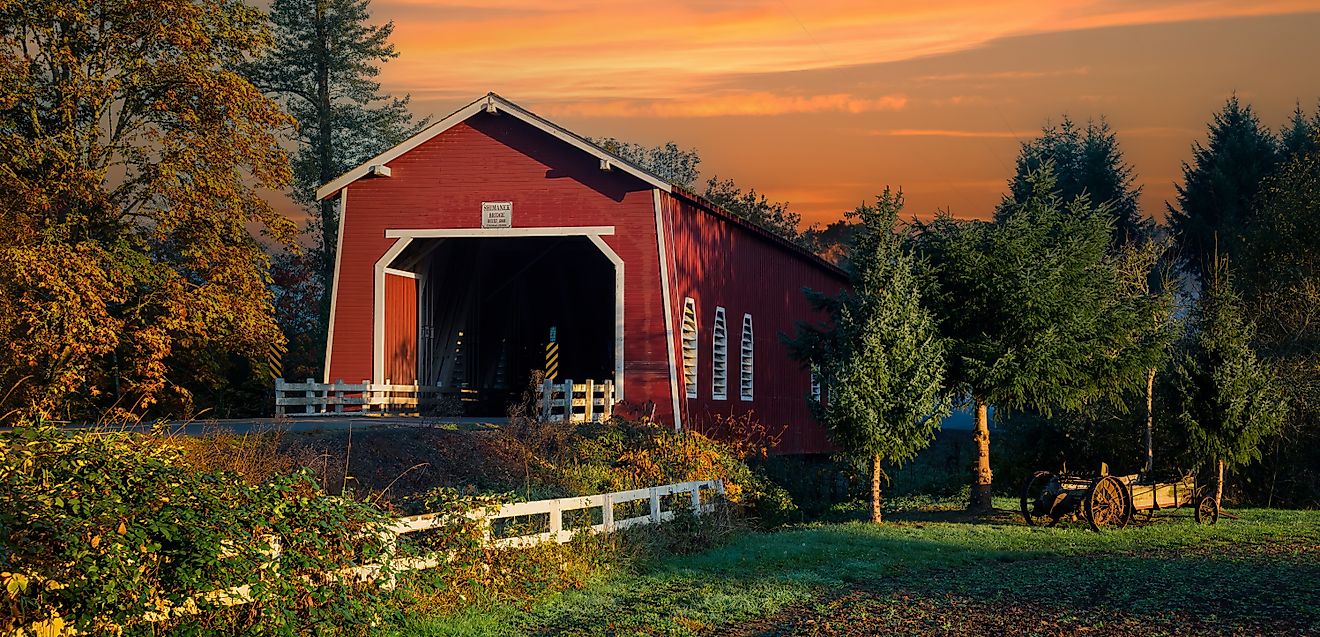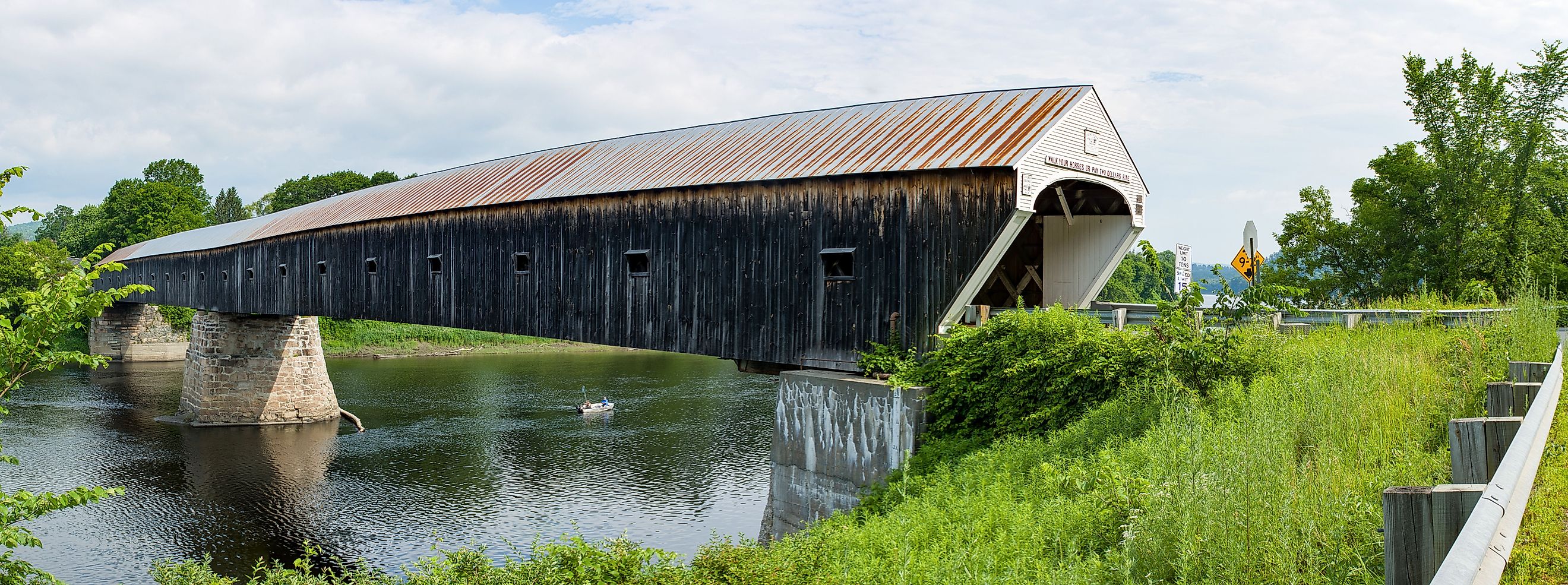
7 Covered Bridges in The US That Still Carry Cars
Covered bridges are more than nostalgic remnants of the past. They are living, functional pieces of American history. While many have been bypassed, dismantled, or preserved solely for foot traffic, a select few still serve their original purpose: allowing vehicles to cross rivers, creeks, and valleys. These working bridges are scattered across the country, mostly in rural areas where they continue to blend historical charm with daily utility.
These seven covered bridges in the United States are still open to vehicular traffic. Each one has its own story, architectural style, and historical significance. From the rolling hills of Pennsylvania to the woodlands of Oregon, these bridges prove that functional infrastructure can also be beautifully preserved history.
Cornish-Windsor Covered Bridge
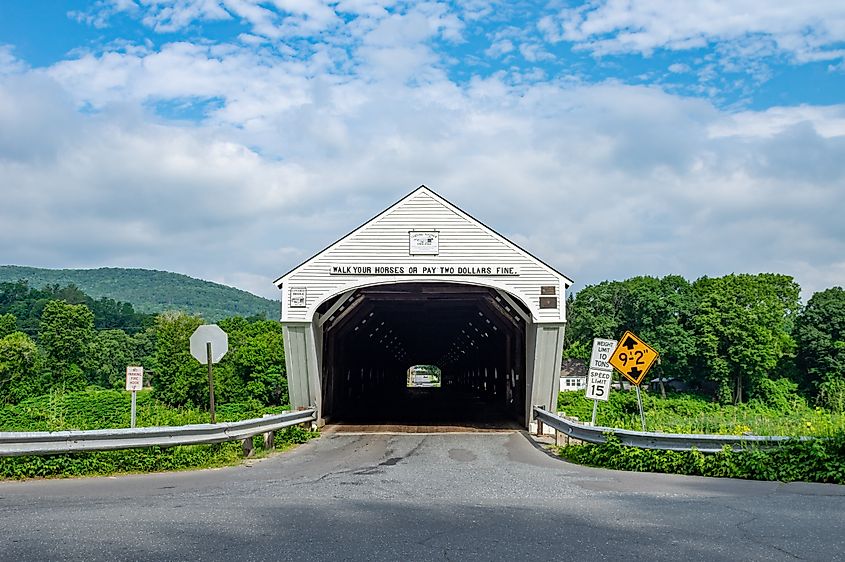
- Location: New Hampshire/Vermont
-
Length: 449 feet
-
Built: 1866
-
Style: Town lattice truss
Spanning the Connecticut River between Cornish, New Hampshire, and Windsor, Vermont, the Cornish-Windsor Covered Bridge is one of the longest covered bridges in the United States that still allows vehicular traffic. Measuring 449 feet in length, it was originally constructed in 1866 and has undergone several restorations to maintain structural integrity.
The bridge features a classic Town lattice truss design, which uses crisscrossing wooden planks fastened with wooden pegs. This style was popular in the 19th century due to its simplicity and strength. While traffic is limited to a single lane and weight restrictions are in place, locals and visitors alike still drive across the span daily.
Beyond its utility, the bridge is a symbol of cross-state cooperation and preservation. Its picturesque location and enduring function have made it a favorite subject for photographers and painters throughout the Northeast.
Philippi Covered Bridge

- Location: Philippi, West Virginia
-
Length: 285 feet
-
Built: 1852
-
Style: Burr arch truss
The Philippi Covered Bridge stands as the only covered bridge in the United States that is part of the US Highway System. Located on US Route 250, it crosses the Tygart Valley River in the town of Philippi and continues to carry two lanes of traffic.
Built in 1852 by Lemuel Chenoweth, one of the most prolific bridge builders of his era, the bridge played a key role during the Civil War. It was used by Union troops during the Battle of Philippi, one of the war’s earliest skirmishes.
With its dual-span Burr arch truss construction and impressive 285-foot length, it remains a functional, historical, and architectural marvel. The bridge was severely damaged by fire in 1989 but was restored and reopened to vehicles in 1991. Today, cars still rumble across the timber floorboards daily.
Taftsville Covered Bridge
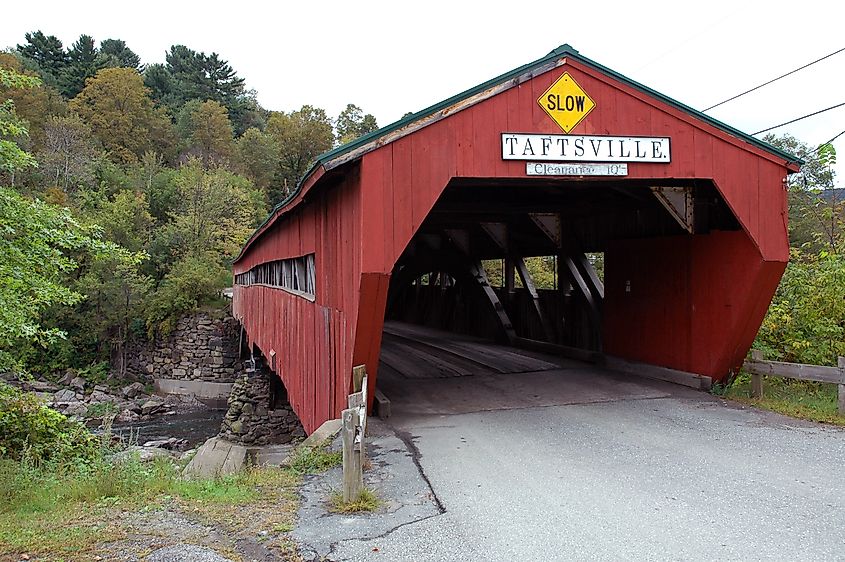
- Location: Woodstock, Vermont
-
Length: 189 feet
-
Built: 1836
-
Style: Multiple kingpost truss
Located in picturesque Woodstock, Vermont, the Taftsville Covered Bridge is one of the oldest in the state and still carries cars across the Ottauquechee River. Built in 1836, it features a multiple kingpost truss system that supports light vehicular traffic.
The bridge was closed in 2011 after being damaged by Tropical Storm Irene but underwent extensive restoration. It reopened to vehicles in 2013 and continues to serve local drivers, though it is closed to large trucks due to weight limitations.
Brightly painted in red and featuring a distinctive twin-span design, Taftsville is a beautiful and practical part of Vermont’s scenic roads.
Banks Covered Bridge
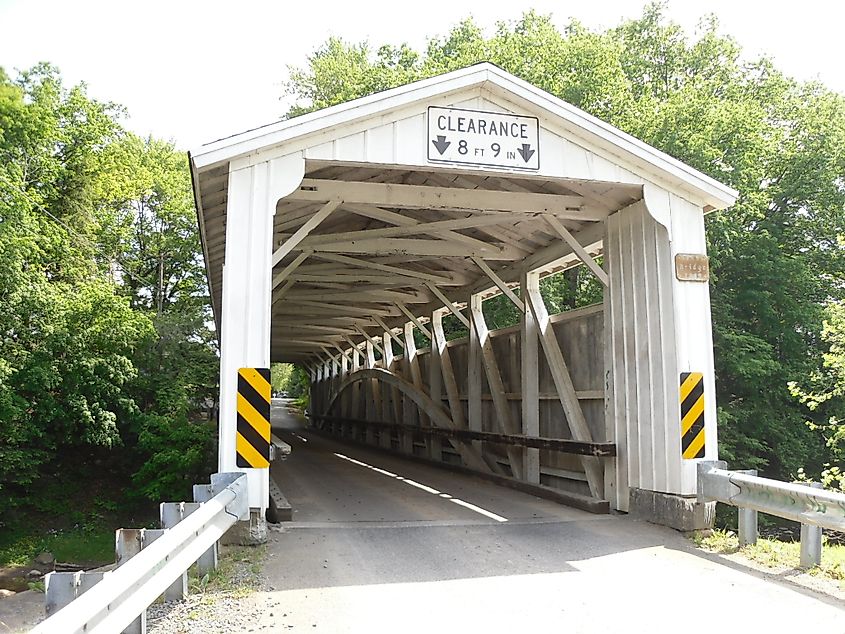
Banks Covered Bridge in New Wilmington, Pennsylvania. Editorial credit: Doug Kerr from Albany, NY, United States via Wikimedia Commons
- Location: Lawrence County, Pennsylvania
-
Length: 121 feet
-
Built: 1889
-
Style: Burr arch truss
The Banks Covered Bridge in western Pennsylvania is one of the two remaining covered bridges in Lawrence County and is still open to cars. It spans the Neshannock Creek near the town of New Wilmington and is used by locals as part of their regular route.
Built in 1889, the 121-foot Burr arch bridge blends traditional form with real-world function. It is well-maintained and includes updated guardrails and signage while preserving its 19th-century character.
Banks Covered Bridge was even featured in an episode of The West Wing, lending it a bit of pop culture status. Though it might look fragile, it’s proven its durability for more than a century of traffic.
Cumberland Covered Bridge
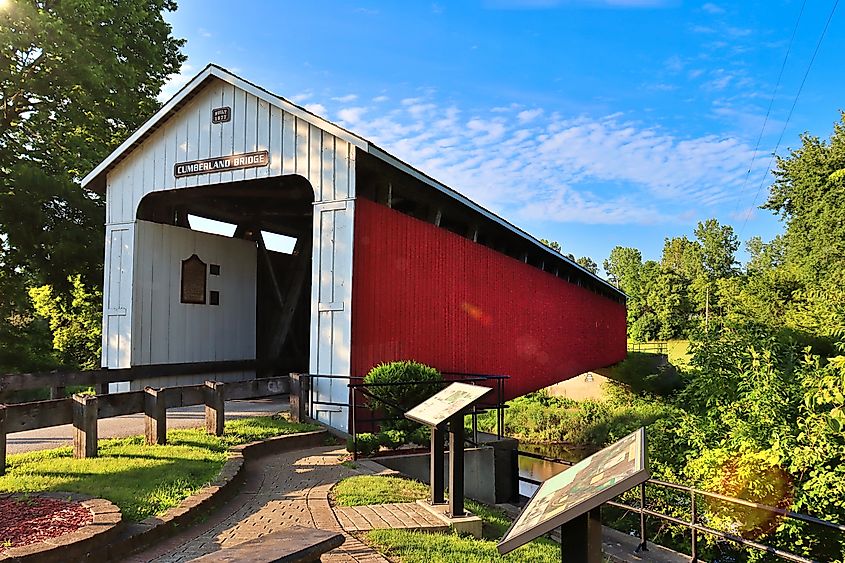
- Location: Matthews, Indiana
-
Length: 181 feet
-
Built: 1877
-
Style: Howe truss
The Cumberland Covered Bridge in Matthews, Indiana, is one of the few remaining covered bridges in the state that still supports active vehicular traffic. Built in 1877, the bridge stretches 181 feet across the Mississinewa River and uses a Howe truss design, which incorporates diagonal wooden members and vertical iron rods for added strength.
It remains open to light local traffic and is well maintained by Grant County. A one-lane road carries cars across the bridge daily, with posted limits to protect the historic structure. In 1913, it was famously carried downstream by floodwaters but remained mostly intact and was later moved back into position, a testament to the strength of its original construction.
The Cumberland Covered Bridge is a centerpiece for local festivals and community events, offering drivers a functional route with deep historical roots.
Green Sergeant’s Covered Bridge
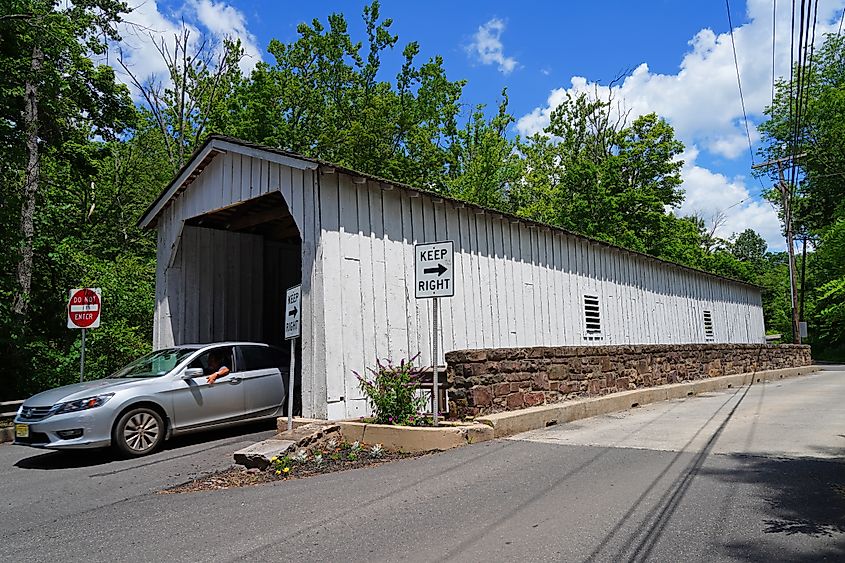
- Location: Hunterdon County, New Jersey
-
Length: 84 feet
-
Built: 1872
-
Style: Modified kingpost truss
Green Sergeant’s Covered Bridge is New Jersey’s last remaining historic covered bridge, and it still carries vehicular traffic across the Wickecheoke Creek in Hunterdon County. Built in 1872 using a modified kingpost truss design, the bridge spans 84 feet and connects County Route 604 near the rural village of Sergeantsville.
Though briefly replaced by a modern concrete span in 1960, the outcry from local residents led to the original bridge being reassembled using original materials just one year later. Today, it remains open to one lane of car traffic, with stop signs posted on either end.
The bridge is listed on the National Register of Historic Places and is maintained by the New Jersey Department of Transportation. Its whitewashed walls and peaceful countryside setting make it a favorite for Sunday drives, especially during fall foliage season.
Kingsley Covered Bridge
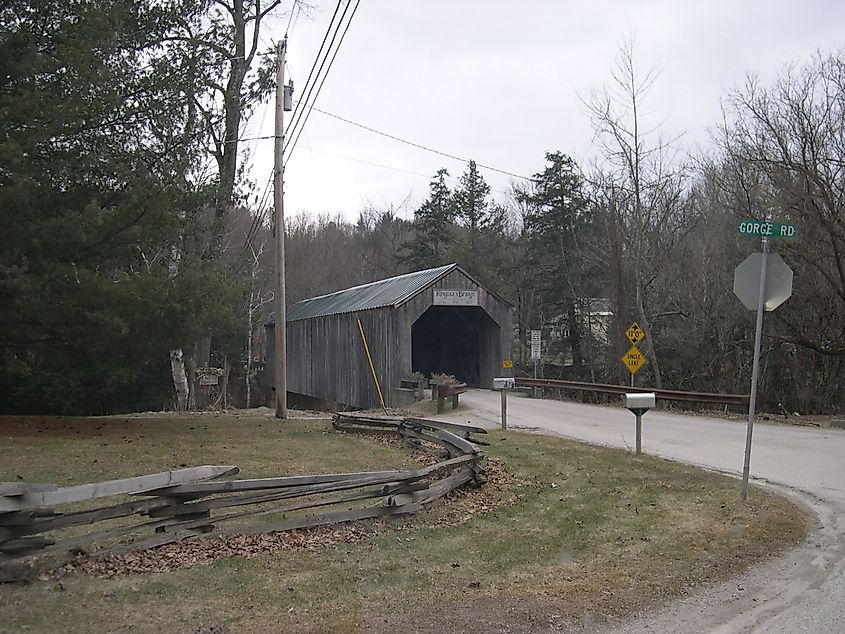
- Location: Clarendon, Vermont
-
Length: 121 feet
-
Built: 1836
-
Style: Town lattice truss
The Kingsley Covered Bridge in Clarendon, Vermont, is a 121-foot-long wooden bridge that continues to carry vehicle traffic across Mill River. Built in 1836, it features a Town lattice truss structure and is one of the oldest covered bridges in the state still open to cars.
Located off East Street in Rutland County, the bridge underwent repairs in 2009 and again in 2017 to reinforce the flooring and siding. It remains open to light vehicles only, with posted weight and height limits, but it serves as an active crossing for locals and visitors.
The Kingsley Bridge stands near the historic Kingsley Grist Mill and is surrounded by rolling pastures and wooded hills. Its rural setting and rustic charm make it a popular photo stop, but it’s also a working part of Vermont’s transportation network.
Final Thoughts: Timeless Crossings Still in Motion
Covered bridges are more than charming remnants of another era. The ones still open to vehicle traffic continue to serve their original purpose, blending form and function in a way that few modern structures can. These bridges are not frozen in time. They creak under tires, frame passing landscapes, and remind drivers that America’s backroads are filled with stories. Each crossing offers a rare chance to touch history without stepping out of your car. In a fast-moving world, these bridges stand as quiet proof that some craftsmanship endures. The past, in these places, still moves.
Chart: Covered Bridges in the US Still Open to Vehicles
| Bridge Name | Location | Year Built | Length (feet) | Style | Open to Vehicles |
|---|---|---|---|---|---|
| Cornish-Windsor Covered Bridge | NH / VT | 1866 | 449 | Town lattice truss | Yes |
| Philippi Covered Bridge | Philippi, WV | 1852 | 285 | Burr arch truss | Yes |
| Taftsville Covered Bridge | Woodstock, VT | 1836 | 189 | Multiple kingpost truss | Yes (cars only) |
| Banks Covered Bridge | Lawrence County, PA | 1889 | 121 | Burr arch truss | Yes |
| Cumberland Covered Bridge | Matthews, IN | 1877 | 181 | Howe truss | Yes |
| Green Sergeant’s Covered Bridge | Hunterdon County, NJ | 1872 | 84 | Modified kingpost truss | Yes |
| Kingsley Covered Bridge | Clarendon, VT | 1836 | 121 | Town lattice truss | Yes (light vehicles) |
